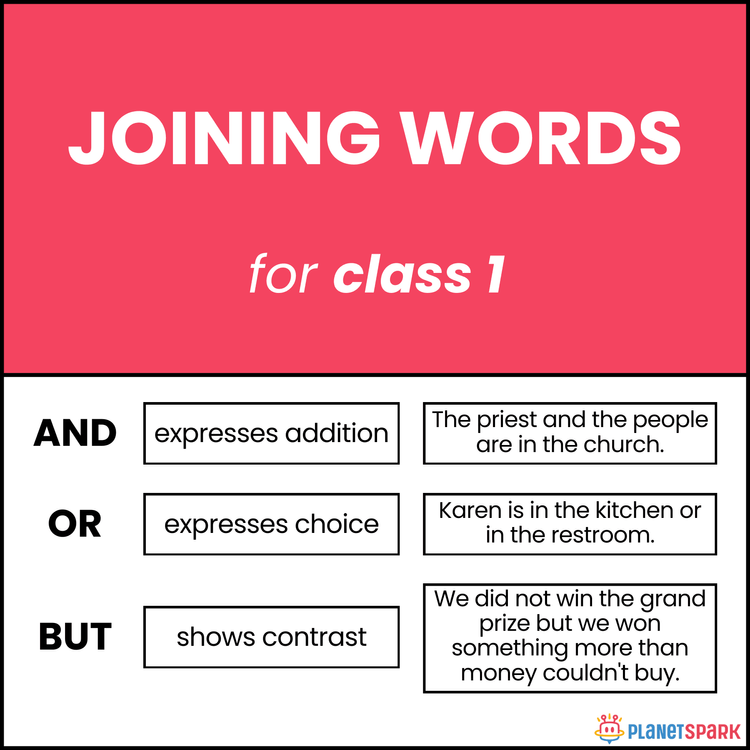Email Writing Course for Class 6 Students Online

Table of Contents
- Why Email Writing is Important for Class 6 Students
- Basics of Email Writing for Beginners
- Formal vs. Informal Email Writing
- Structure of an Email for Class 6
- Common Mistakes Students Make in Email Writing
- Importance of Polite Tone and Etiquette
- Preview of What’s Next
- Practical Examples of Email Writing for Class 6
- Integrating Grammar into Email Writing
- Vocabulary Building Through Email Writing
- Advanced Tips for Impressive Email Writing
- How Teachers and Parents Can Support Email Writing
- The Role of Email Writing in Developing Communication Skills
- Email Writing Exercises for Class 6 Students
- Assessment Methods for Teachers and Parents
- Benefits of Learning Email Writing Early
- Why Choose PlanetSpark?
In today’s digital-first world, communication skills have become as important as mathematics and science for young learners. Among the most essential skills is email writing, a structured and formal way of sharing ideas, seeking information, and expressing thoughts. For Class 6 students, learning email writing is more than just an academic requirement; it is the foundation of professional communication in the future. Students who master email writing early develop clarity of thought, grammar precision, and the confidence to express themselves effectively.
This blog on the Email Writing Course for Class 6 has been designed to serve students, parents, and educators who are seeking a complete guide. It will cover everything from understanding the basics of email writing, step-by-step format explanation, real-life examples, grammar usage, tone, and etiquette, and practical exercises. By the end, Class 6 students will not only be able to draft a correct email but also gain the skills to communicate respectfully and clearly in different situations.
We will go deep into every important aspect—like the parts of an email, the difference between formal and informal styles, tips for improving vocabulary, and avoiding common mistakes. The blog will also explain how PlanetSpark’s English Grammar and Writing Programs can boost your child’s command of the English language while making them confident communicators.

Why Email Writing is Important for Class 6 Students
Email writing is not just about sending a message online; it is a life skill. When students learn the basics of email writing in Class 6, they develop the ability to present their thoughts logically and politely. Unlike casual chatting on social media, emails require proper grammar, structured sentences, and the right tone. This discipline nurtures strong writing habits that benefit students in essays, letters, and even future professional communication.
Moreover, schools across the globe have started integrating digital communication into academic life. Whether it is submitting homework, asking questions to teachers, or participating in online projects, emails have become a standard mode of communication. That is why learning email writing at this stage helps students prepare for higher classes and beyond.
Basics of Email Writing for Beginners
Before diving into complex rules, Class 6 students must first understand the fundamentals of email writing. At its core, every email has three main sections:
- Header Section – Includes recipient’s email address, sender’s address, and subject line.
- Body Section – The main message of the email, which must be clear and concise.
- Closing Section – Includes polite sign-off and sender’s name.
By focusing on these three parts, students can build a strong foundation in drafting simple emails. Teachers and parents should encourage practice by giving small exercises, such as writing an email to a teacher requesting leave or sending a thank-you note to a friend.
The Subject Line – First Impression Matters
The subject line is often the first thing a reader notices. For Class 6 students, writing a short and clear subject is very important. For example:
- Request for Homework Extension
- Thank You for the School Trip
A well-written subject helps the recipient understand the purpose of the email immediately.
Formal vs. Informal Email Writing
One of the most crucial aspects students must learn is the difference between formal and informal email writing.
Formal Emails
These are written to teachers, principals, or any official figure. They require polite language, proper grammar, and a structured format. Example situations include:
- Requesting leave for medical reasons
- Asking for clarification on an assignment
- Applying for participation in a school event
Informal Emails
These are casual and used with friends or family. While they can be relaxed, they should still be polite and respectful. Examples include:
- Writing to a cousin about holidays
- Thanking a friend for a gift
- Sharing experiences of a school trip
Teaching students to differentiate between these two formats ensures they use the right tone depending on the situation.
Seats are filling fast! Help your child master both formal and informal email writing with our English Grammar & Writing Program.
Structure of an Email for Class 6
Students should follow a simple and universal format that makes their emails easy to read and professional. A typical structure includes:
- Salutation (Greeting) – Example: Dear Sir/Madam, Respected Principal.
- Introduction – A short opening sentence stating the purpose.
- Body of the Email – Main message with details explained in 2–3 sentences.
- Closing Line – A polite remark such as Thank you or Looking forward to your response.
- Sign-off – Yours sincerely, followed by the student’s name.
By sticking to this structure, Class 6 students avoid confusion and present their ideas clearly. Teachers can assign small tasks where students reframe a spoken request into a structured email.
Common Mistakes Students Make in Email Writing
While learning email writing, young students often repeat certain errors. Recognizing these mistakes is the first step toward improvement.
Mistake 1: Informal Language in Formal Emails
Using shortcuts like u instead of you or casual words like hey in formal communication can leave a poor impression.
Mistake 2: Ignoring Grammar and Punctuation
Emails must always follow correct grammar rules. Even small errors in capitalization or spelling can make the email look careless.
Mistake 3: Missing Subject Line
Many students forget to include the subject line, which makes the email incomplete and unprofessional.
By avoiding these errors, Class 6 learners can become proficient email writers.
Spots are limited! Boost your child’s email writing confidence with PlanetSpark’s English Grammar Program.
Reserve your free trial class now before registrations close!
Importance of Polite Tone and Etiquette
Email writing is not only about structure and grammar; it is also about courtesy. Using phrases like I kindly request, Please let me know, and I would be grateful makes the email polite and respectful.
Students must also learn the value of professional sign-offs and refraining from unnecessary emojis or abbreviations in formal communication. Teachers can practice this by role-playing scenarios like requesting permission or thanking a teacher.
A polite tone ensures that the email builds respect and conveys seriousness. For Class 6 students, this is an essential step in developing professional communication habits.
Preview of What’s Next
So far, we’ve covered the basics of email writing, the importance of learning it in Class 6, the difference between formal and informal styles, common mistakes, and the standard format. In the next part, we will dive deeper into examples of emails, grammar integration, vocabulary building, and advanced tips that will make students’ emails more impactful.

Practical Examples of Email Writing for Class 6
To help students understand how to apply the rules, let us look at some practical examples. These samples can be practiced in classrooms or at home with guidance.
Example 1: Formal Email to a Teacher
Subject: Request for Leave Due to Illness
Dear Madam,
I am writing to inform you that I am not feeling well and will not be able to attend school for the next two days. Kindly grant me leave from 6th to 7th October.
Thank you for your understanding.
Yours sincerely,
Rahul Sharma
Example 2: Informal Email to a Friend
Subject: Sharing My Holiday Experience
Hi Riya,
I hope you are doing well. I wanted to tell you about my trip to Shimla during the holidays. It was amazing! I will share pictures when we meet in school.
Take care,
Ananya
By practicing such examples, students gain confidence in applying the correct tone, structure, and grammar depending on the situation.
Integrating Grammar into Email Writing
Strong grammar is the backbone of effective email writing. For Class 6 students, emails provide a real-life platform to apply grammar concepts they learn in textbooks.
- Tenses: Using correct tenses ensures clarity. For instance, "I will attend the event tomorrow" vs. "I attended the event yesterday."
- Punctuation: Commas, full stops, and question marks must be used correctly to avoid confusion.
- Capitalization: Always capitalize the first letter of a sentence, proper nouns, and greetings like Dear Sir.
- Sentence Structure: Students should avoid fragments and learn how to write complete sentences with subjects and verbs.
When students learn to connect grammar rules with real communication tasks like emails, their understanding improves significantly.
Vocabulary Building Through Email Writing
Vocabulary plays a key role in making emails more engaging and impactful. Class 6 students can enhance their word bank by learning polite phrases, connectors, and transition words.
Useful Phrases for Formal Emails
- I would like to request…
- Kindly let me know…
- I look forward to your response.
Useful Phrases for Informal Emails
- It was so much fun…
- Can’t wait to see you…
- Let’s plan something together.
Encouraging students to keep a “vocabulary diary” where they note down new words and phrases from reading or class activities helps them incorporate better words into their emails.
Enroll in PlanetSpark’s English Grammar Program today and unlock their communication skills.
Advanced Tips for Impressive Email Writing
Once students have mastered the basics, they can focus on advanced techniques to make their emails stand out.
Tip 1: Keep It Concise
Emails should never be too lengthy. Teach students to state the purpose directly and avoid unnecessary details.
Tip 2: Use Paragraphs
Even short emails should be divided into small paragraphs to improve readability.
Tip 3: Maintain a Positive Tone
Emails should reflect respect and positivity, especially in formal communication. Phrases like Thank you for your time leave a lasting impression.
Tip 4: Revise Before Sending
Encourage students to re-read their email to check for spelling, grammar, and tone before hitting “send.”
These tips help students develop habits that will benefit them throughout their academic and professional journeys.
How Teachers and Parents Can Support Email Writing
Students learn better when they practice regularly and receive feedback. Parents and teachers can contribute by:
- Assigning real-world tasks like writing an email to request library books.
- Reviewing students’ drafts and highlighting grammar or tone improvements.
- Encouraging peer-review activities in the classroom.
- Appreciating students for well-structured emails to boost confidence.
Active involvement from adults creates an environment where students see email writing not as a chore but as a valuable life skill.
Act fast! Boost your child’s writing skills with PlanetSpark’s English Grammar and Communication Course.
The Role of Email Writing in Developing Communication Skills
Email writing is more than just a classroom exercise; it directly contributes to overall communication skills. Students learn how to organize thoughts, structure information, and express themselves clearly. This ability enhances their essay writing, public speaking, and storytelling as well.
For Class 6 students, building communication skills at this stage lays the foundation for leadership, academic excellence, and confidence in real-world situations.

Email Writing Exercises for Class 6 Students
Practice is the most effective way to master email writing. Teachers and parents can assign tasks that mirror real-life situations to make learning engaging.
Exercise 1: Leave Application
Write an email to your class teacher requesting leave for two days due to a family function.
Exercise 2: Thank-You Email
Draft an email thanking your principal for organizing the Annual Day event.
Exercise 3: Sharing an Experience
Write an email to a cousin describing a fun activity you did during the weekend.
These exercises help students apply the format, grammar, and polite tone they’ve learned.
Assessment Methods for Teachers and Parents
Monitoring progress is crucial in building strong writing skills. Teachers and parents can assess email writing by looking at:
- Clarity of Subject Line – Is it short and relevant?
- Grammar Usage – Are tenses, punctuation, and capitalization correct?
- Structure – Does the email follow the proper format (salutation, body, closing, sign-off)?
- Tone – Is the email polite and appropriate for the context?
- Concise – Is the message short yet complete?
Regular feedback helps students understand their mistakes and motivates them to improve.
Benefits of Learning Email Writing Early
Learning email writing in Class 6 builds essential academic and life skills, such as:
- Improved Grammar and Vocabulary – Frequent practice strengthens language fundamentals.
- Confidence in Communication – Students become more comfortable expressing themselves formally.
- Preparation for Higher Studies – By the time they reach high school, they already know the basics of professional writing.
- Digital Readiness – In a tech-driven world, emails are a primary tool for communication.
These benefits extend beyond academics, preparing students for future success.
Don’t miss out! Strengthen your child’s foundation in English with PlanetSpark’s Grammar and Writing Programs.
Email writing is more than a chapter in English it is a real-world skill. By starting in Class 6, students develop the ability to write structured, polite, and grammatically correct messages that will help them academically and professionally. Through examples, exercises, and continuous feedback, learners can grow into confident communicators.
PlanetSpark’s courses combine English grammar, writing practice, and interactive learning to ensure students master email writing while also enhancing overall communication skills.
Why Choose PlanetSpark?
PlanetSpark offers a comprehensive English Grammar and Writing Program designed for students in Classes 2–9. For Class 6 students in particular, our platform provides:
- Structured Lessons: Covering grammar, vocabulary, and writing formats.
- Interactive Classes: Engaging activities, role plays, and email-writing practice.
- Personalized Feedback: One-on-one mentoring for improvement.
- Future-Ready Skills: Preparing students for digital communication and leadership roles.
By choosing PlanetSpark, you give your child more than just academic skills—you give them confidence, clarity, and a head start in life.
Act now! Enroll your child in PlanetSpark’s English Grammar and Writing Course today.
Free demo sessions are limited. Book your slot before registrations close!
Frequently Asked Questions
Email writing helps students develop grammar, structure, and communication skills that will be useful in academics and future careers.
A proper email includes salutation, introduction, body, closing line, and sign-off. The subject line is also mandatory.
By reading, maintaining a vocabulary diary, and learning polite phrases commonly used in formal communication.
Formal emails are used for teachers, principals, and official figures with a respectful tone, while informal emails are casual and for friends or family.
Yes, because it strengthens grammar, sentence formation, vocabulary, and polite expression, which are essential for communication.
Download Free Worksheets
Personalized Communication Report
Record a video to get a AI generated personalized communication report for your child

Hi There, want to try these
tips for your child with
LIVE with our expert coach?
Let's check your child's
English fluency

